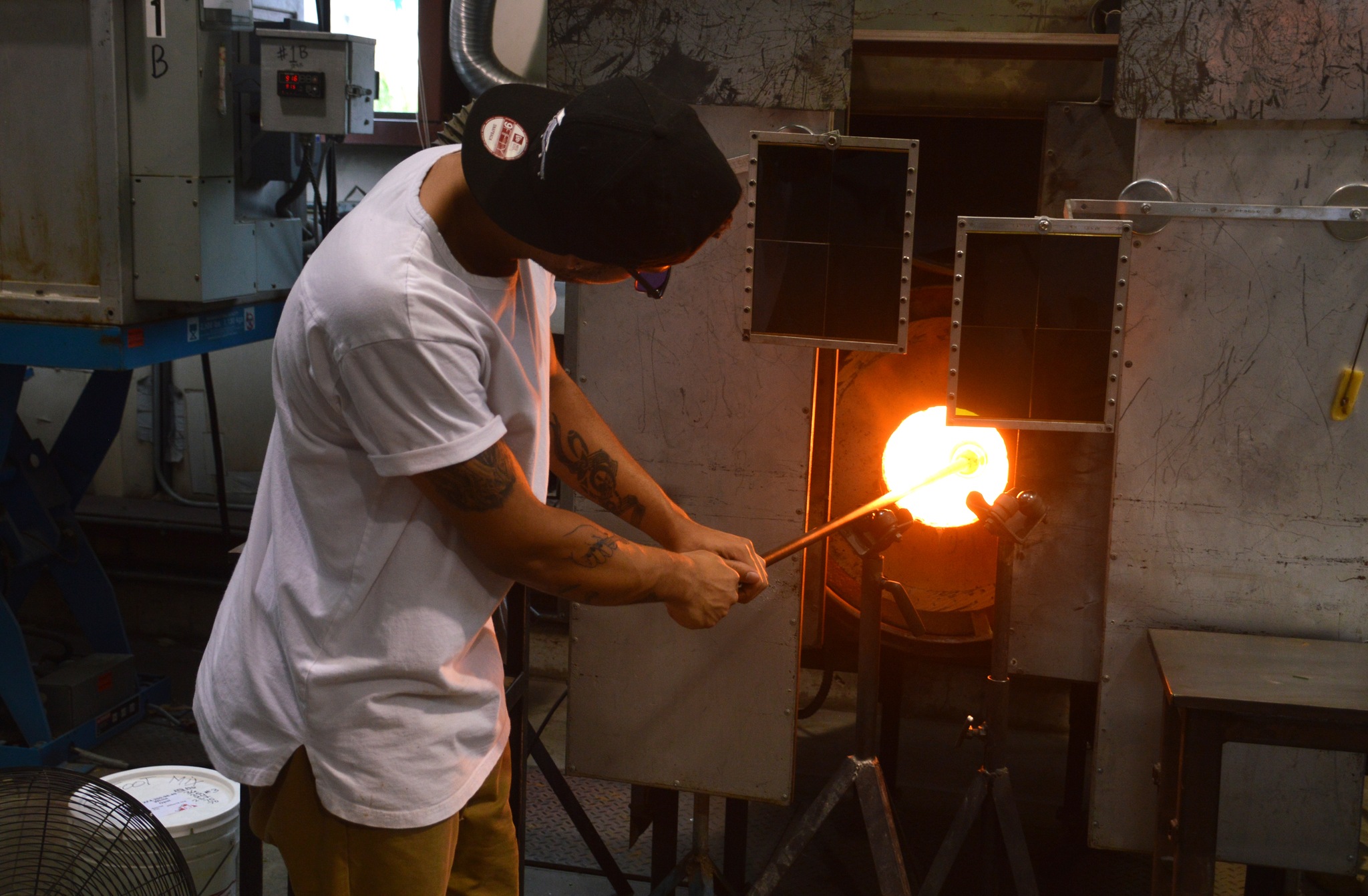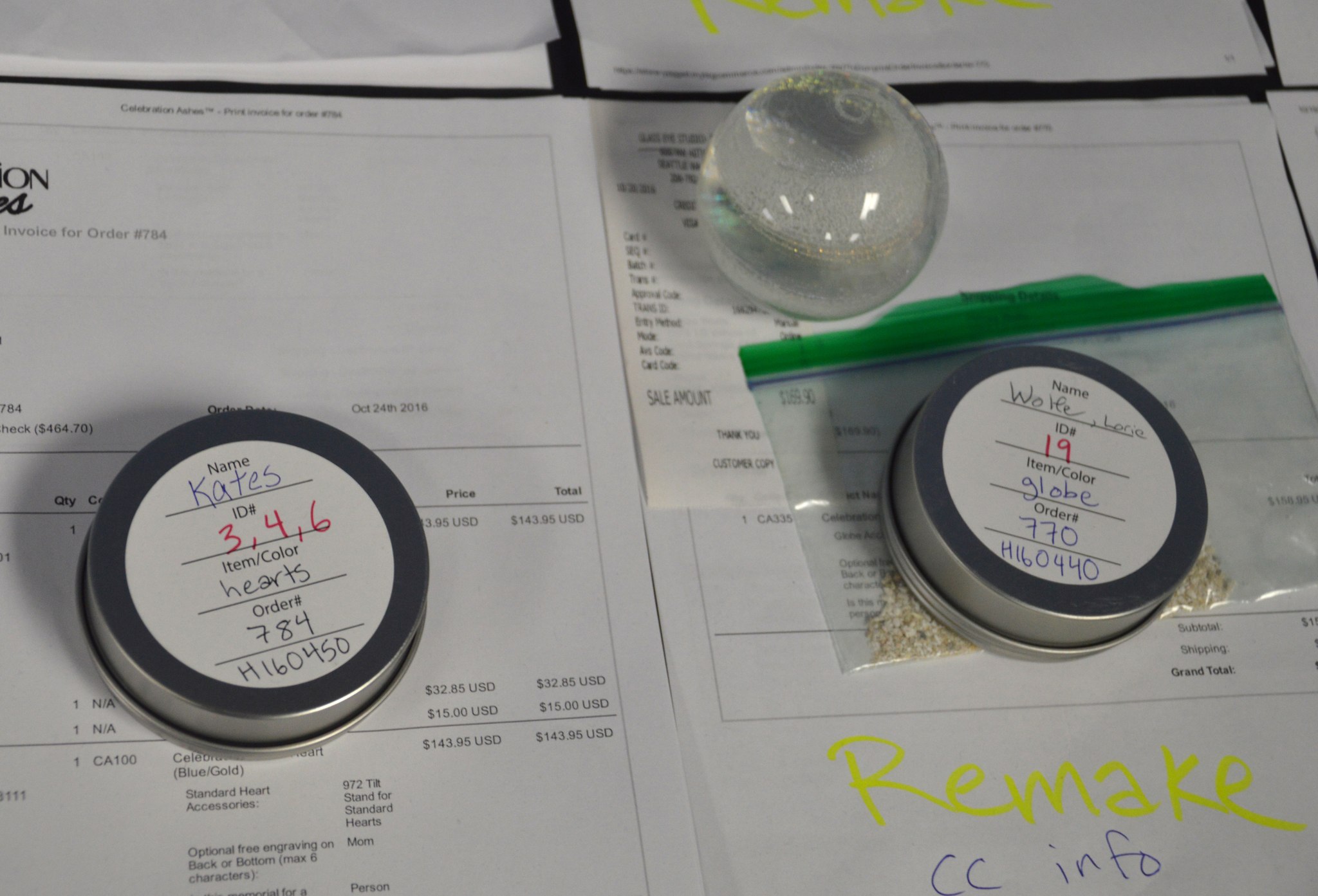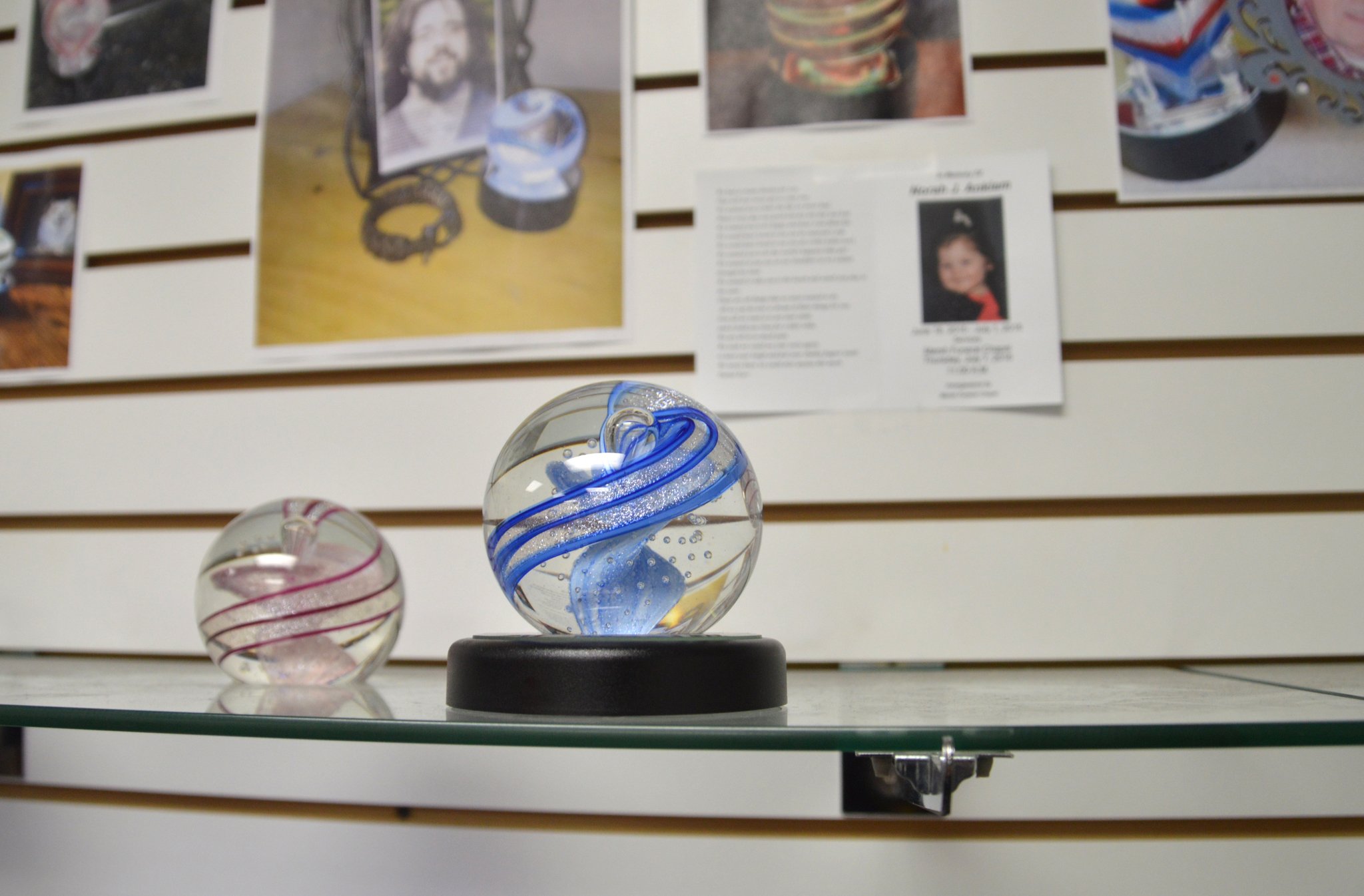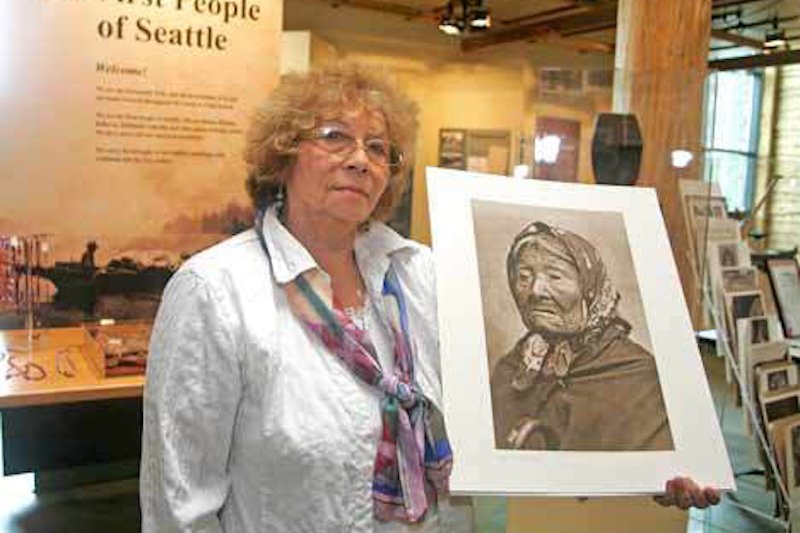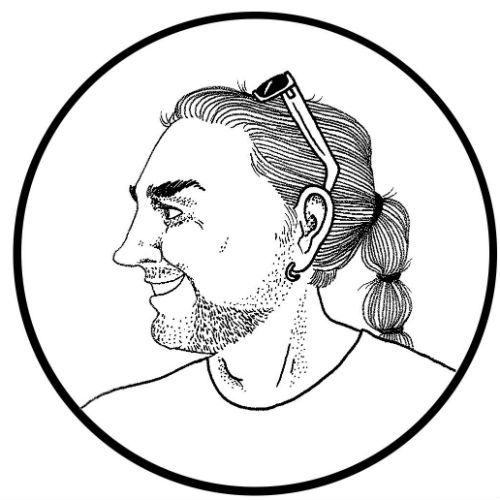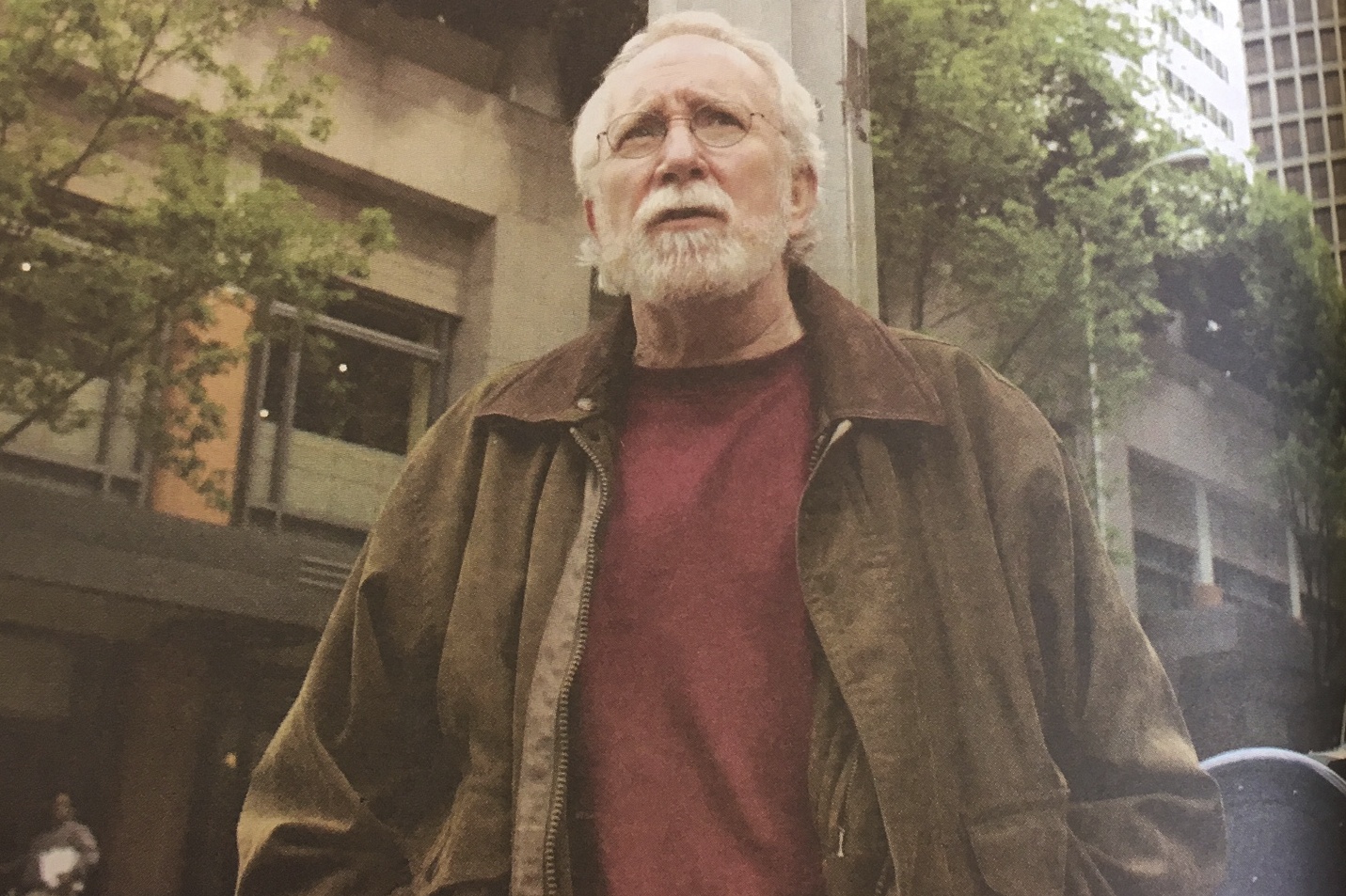In the production room of Glass Eye Studio, a handful of workers plunge glass blobs at the end of rods into glowing kilns, remove them, roll the molten material into shapes, cool it, and heat it some more. The glass will become paperweights, Christmas ornaments, and even decorative pickles, among many products. But on some days, workers make more unusual pieces. For three years the company has been making glass keepsakes that incorporate human or animal ashes into the glasswork.
A family business located next to the waterfront in industrial Ballard, Glass Eye Studio was founded in 1978. When the studio started making memorial pieces incorporating ash in 2013, they were all sold to external resellers. But starting last January Glass Eye Studio has been designing its own pieces in a line called Celebration Ashes. According to Glass Eye Studio artist Brent Rogers, the studio creates about 30 of these glass-and-ash memorials each week, and it’s made 12,000 memorials in total.
The studio’s work sometimes rubs people the wrong way—mostly among those who think that human remains should be kept interred. “On Facebook and stuff we’ll get comments that are, like, ‘This is wrong, people should be buried,’ or ‘This is something that you shouldn’t spend money on because people are starving in Africa,’” studio coordinator Danielle Rogland says.
That point of view was underscored last week when the Catholic Church announced that ashes must be kept together and buried, thus banning scattering ashes or, presumably, incorporating them into mementos.
But Rogland says customers have never complained. “They’re able to let go of the rest of the ashes after they know that they have this piece that they’ll be able to hold onto, and that’s sort of like a healing thing for them.”
Many glass studios around the country, including some in Washington, make similar products fusing ash and glass, but Rogland says Glass Eye Studio aims to offer people more choices in customizing their memorial pieces. The most recent Celebration Ashes product—Heaven Bound, launched in May—includes more clear glass than usual surrounding the ash and color. Its name alludes to a metaphorical meaning, according to Rogland: “The upward spiral represents a soul traveling upwards towards rest, and we think that is a really beautiful image.”
The process is similar to creating other glass ornaments and products, but it starts with family members of the deceased person or animal sending a small amount of ashes to the studio. These are sifted and kept in a tin labeled with a name and ID number until ready to be made.
Glass Eye Studio makes a video of the process, which family members can also view in person. To make a memorial piece, an artist places about a tablespoon of ash onto a tray and rolls hot glass onto it to capture it into the piece. Family members have input into design and color; most popular is a heart-shaped memorial of swirling blue, purple, and gold, says Rogland, though any combination of colors in several shapes is possible.
Rogers is one of about six artists at Glass Eye Studio who is trained to make the ash products, but he makes about half of them. Handling such sensitive material carries extra responsibility, he says, and it can be stressful at times. “There’s precautions and a routine we go through every time we do the ash products, to keep it clean, to make sure that we’re getting most all of it back to the person.”
Since the memorials use only a small amount of ash, it’s possible to create as many as 50 for one person, though people commonly scatter the remaining ashes. Most of the time the studio makes memorials from human ashes, though it’s not uncommon for people to send the ashes of cats, dogs, or even a horse or bird.
As for the Catholic Church’s latest decree, Rogland doesn’t think it will affect business too much. “I think handling a loved one’s ashes and making decisions about how to honor them is a very personal choice for each family, and they’re going to choose what is best for them overall.”
Many religious people have written to express their appreciation for the memorials, and both religious and nonreligious people choose memorials for all kinds of reasons. “[There are] people who are choosing cremation because they care about the environment sometimes, or people who chose cremation because they didn’t have enough money for burial. You get all sorts of people from all different walks of life that are choosing this for all different sorts of reasons, and it’s cool just hearing all the stories.”
